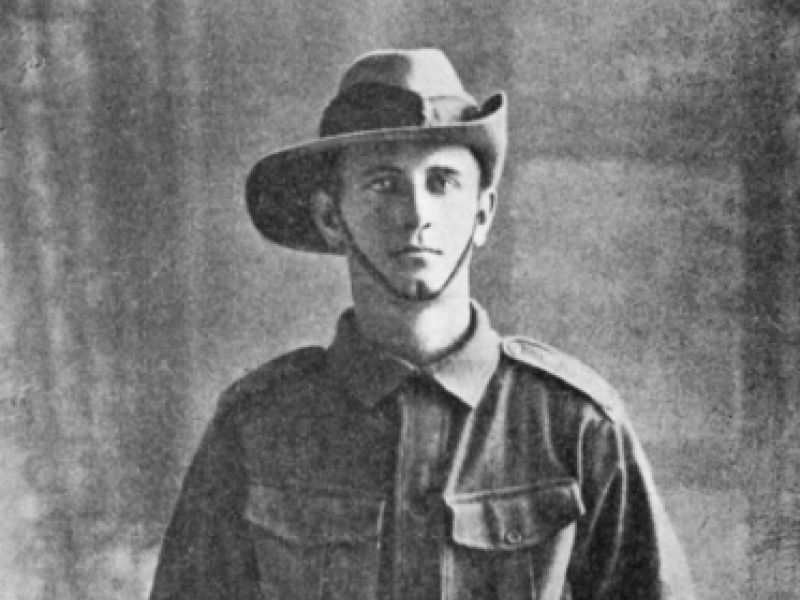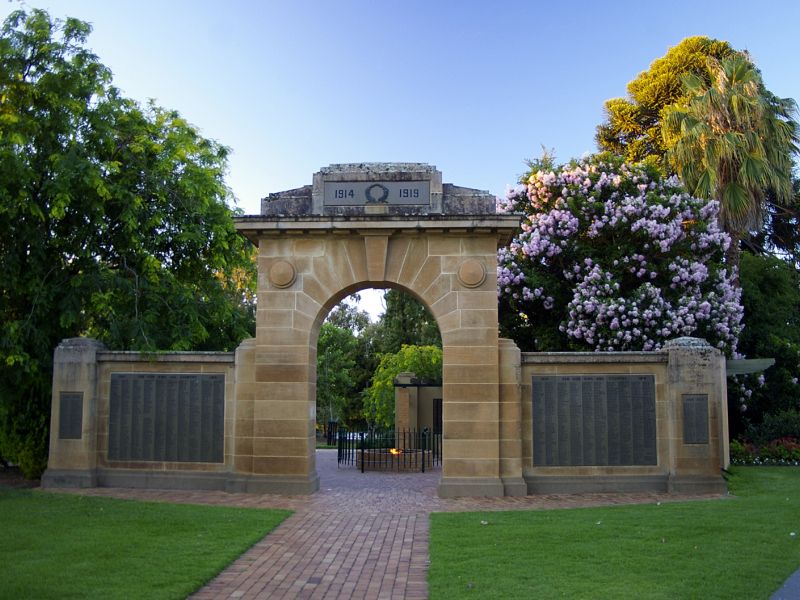Private Charles Stanley Bingley, 55th Battalion, AIF
Charles Bingley was born on 28 February 1892 on the family farm “Woodfield” near Queanbeyan, New South Wales, the son of Thomas and Victoria Bingley.
Charles was educated in Queanbeyan and was a member of the school cadets. He worked as a teacher at Euberta Public School near Wagga Wagga. The school had begun in 1912 with around 20 local children.
Bingley was still in this role when the First World War began. On signalling his intent to enlist, Bingley’s sister Lily, who was also a teacher, was transferred to Euberto Public School to take over from her brother.
On 1 December 1915, Bingley joined the start of the Kangaroos recruitment march at Wagga Wagga. 350 miles later on 7 January 1916, the marchers arrived in Sydney; their numbers had swelled from 88 to 230. The Kangaroo March was the longest of the “snowball” recruitment marches.
The Kangaroos were entrained to Goulburn shortly after and on 24 January 1916, Bingley enlisted in the AIF. He was allocated to the 2nd reinforcements to the 55th Battalion, and embarked on 14 April aboard the Ceramic for the Middle East.
His battalion trained in the Egyptian sands until late July, when they were sent to England. Bingley was taken on strength of the 55th Battalion on 23 September and was sent to C Company. He and the other reinforcements were sent on a one-week training course at the divisional bomb school.
While the 55th Battalion had been committed to the disastrous attack at Fromelles three months earlier, Bingley entered the front line for the first time near Fleurbaix in early October.
In mid-October they transferred to the Somme. The 55th entered the front line near Flers on 21 October and spent the next week in the line before moving back to the details camp. The 55th Battalion re-entered the front line near Flers during 30 and 31 October. Rain made the going tough, but by late afternoon on the second day, the battalion had completed its move.
At some point during the day, Bingley was hit in the chest by shrapnel from a German shell. He was evacuated to the 36th Casualty Clearing Station but his wound proved mortal and he died on 2 November. He was laid to rest in Heilly Station Cemetery, Mericourt L’Abbe. He was 24 years old.
Two of Charles’s brothers also served in the AIF. Harold joined in January 1916 and arrived in England only two days before his brother was mortally wounded in France. Harold joined the 55th Battalion that December but illness shortened his war and in January 1918, he returned to Australia for discharge.
Ewen enlisted in August 1916 and served with the 19th Battalion on the Western Front where he was wounded twice. He returned to Australia in 1919.
Michael Kelly, Historian, Military History Section
Image: Studio portrait of 1626 Private (Pte) Charles Stanley Bingley, 55th Battalion. c.1915

 Australian War Memorial
Australian War Memorial